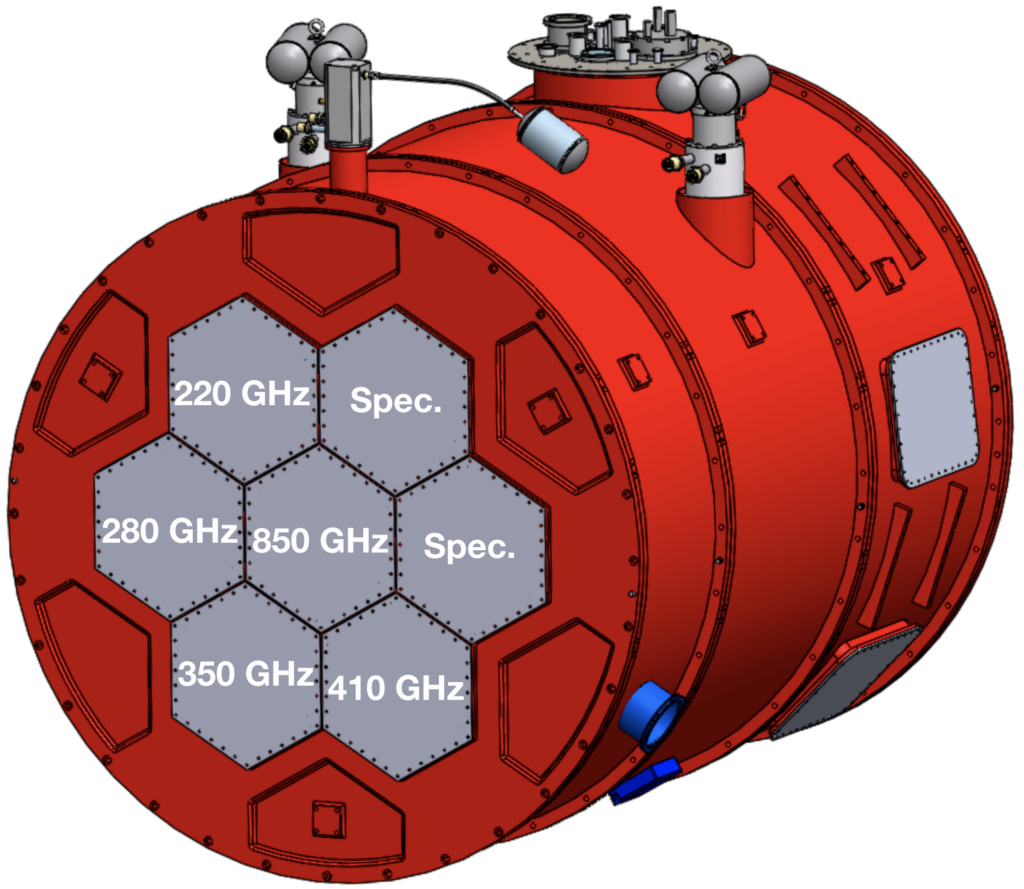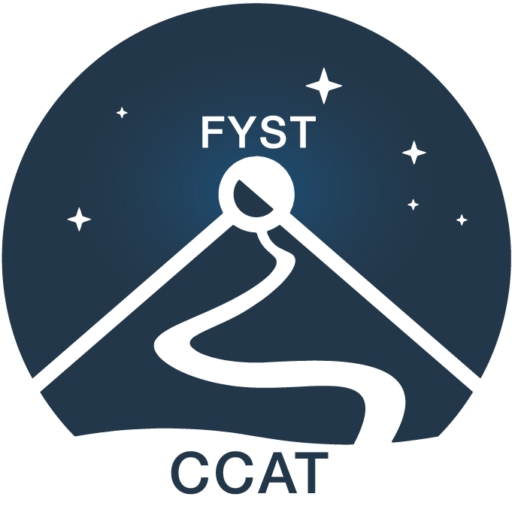
The Prime-Cam science goals and forecasts are described in Aravena et al. 2023.
Prime-Cam Science
Prime-Cam is one of two instruments planned for the Fred Young Submillimeter Telescope, and will provide unprecedented spectroscopic and broadband measurement capabilities to address important astrophysical questions ranging from Big Bang cosmology through reionization and the formation of the first galaxies to star formation within our own Milky Way galaxy. Prime-Cam on the FYST will have a mapping speed that is over ten times greater than existing and near-term facilities for high-redshift science and broadband polarimetric imaging at frequencies above 300 GHz. Prime-Cam’s instrument modules will cover 220 to 850 GHz, and this wide range of frequencies will allow excellent characterization and removal of galactic foregrounds, which will enable precision measurements of the submillimeter and millimeter sky, offering the opportunity for synergies with overlapping surveys. Prime-Cam will be used to constrain cosmology via the Sunyaev-Zeldovich effects, map the intensity of [CII] 158 μm emission from the Epoch of Reionization, measure cosmic microwave background polarization and foregrounds, characterize the star formation history over a wide range of redshifts, and more.
The Prime-Cam Instrument
Prime-Cam will house seven 40 cm diameter instrument modules inside a 1.8 meter diameter cryostat, cooled by a dilution refrigerator and pulse tube cryocoolers. The cryostat consists of 300 K, 80 K, 40 K, and 4 K stages. The instrument modules mount to the 4 K stage and house 4 K, 1 K, and 100 mK stages. The optical elements will consist of silicon lenses, and the instrument modules can be individually optimized for particular science goals. The modules’ cryogenic readout designs enable the readout of tens of thousands of detectors (described below) from 100 mK to room temperature. Modules currently in development include the 280 GHz module, the 350 GHz module, the 850 GHz module, and the EoR-Spec module. Mod-Cam is being developed as a module testbed for Prime-Cam. Prime-Cam is currently under construction at Redline Chambers in Salt Lake City, Utah.

Prime-Cam Detector Technology
Prime-Cam will use arrays of kinetic inductance detectors (KIDs), superconducting inductor-capacitor (LC) resonators multiplexed in the frequency domain. Incoming photons break Cooper pairs in the inductive strips, altering quasiparticle density and kinetic inductance of the detectors. This increase in kinetic inductance shifts the resonant frequency, making it sensitive to the incident photon power. The resonant frequencies of KIDs are uniquely tuned during fabrication. Warm electronics transmit microwave tones and measure the amplitude and phase shifts modulated by changes in the resonators’ frequencies and quality factors due to incoming photons. This inherent frequency sensitivity enables KIDs to be naturally multiplexable, allowing thousands of KIDs with unique frequencies to be read out through a single microwave feedline. Several KID arrays have been fabricated and tested, with many more underway. More details about the Prime-Cam detector and readout technology are found in Sinclair et al. 2024, Aravena et al. 2022, Chapman et al. 2022, Choi et al. 2021, Duell et al. 2020, and other papers found in the link below.
